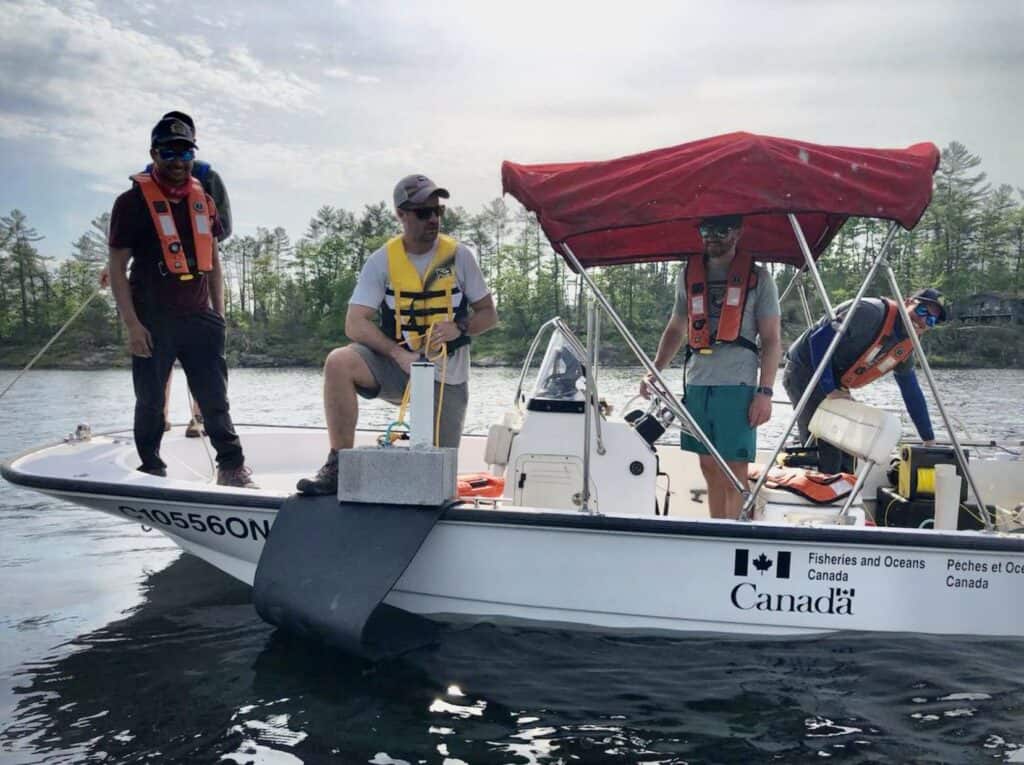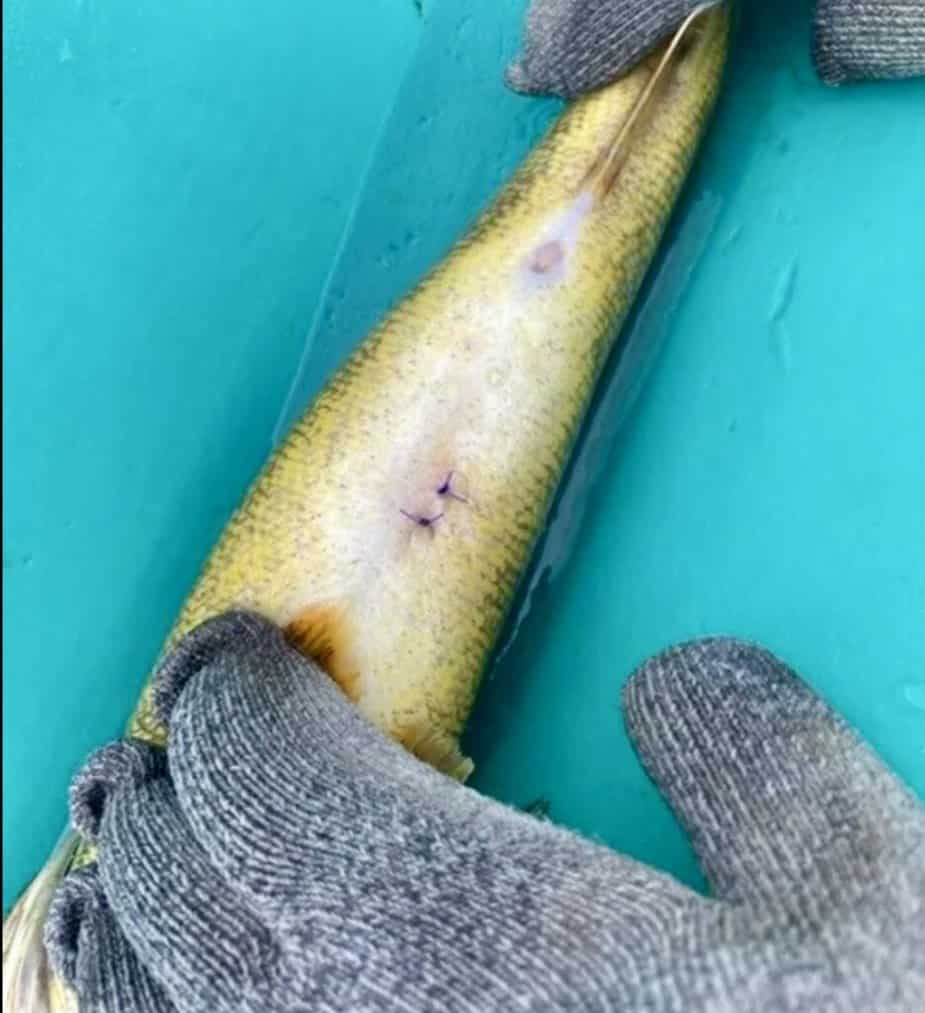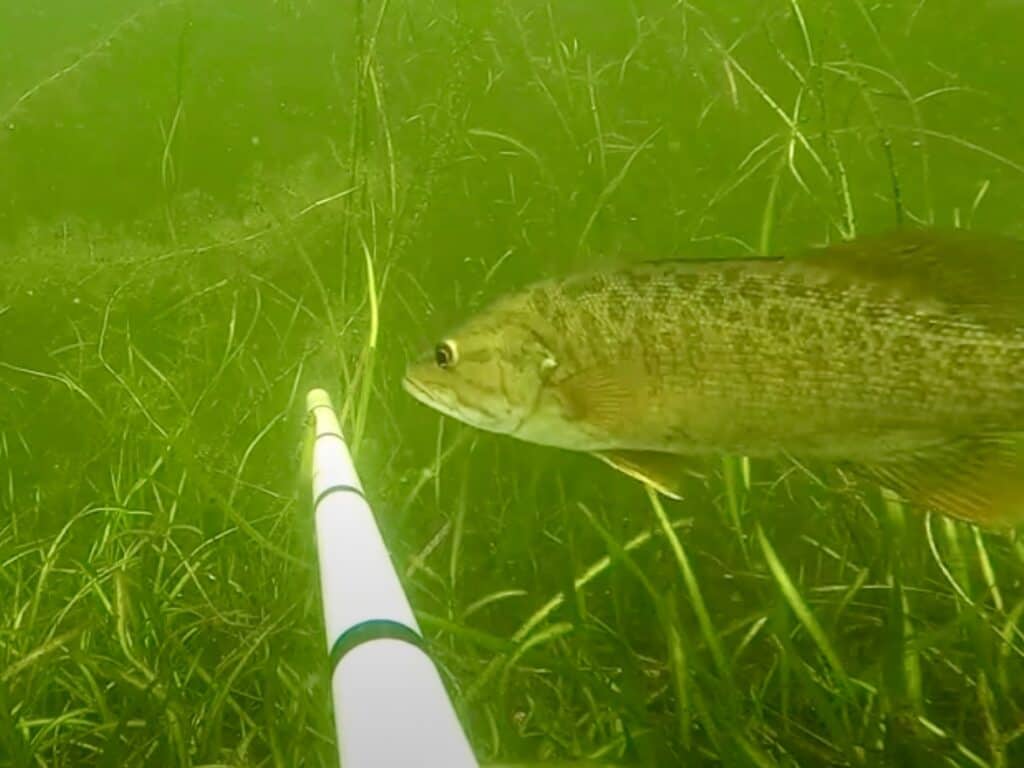Trent’s TARP project engaged in long-term study of freshwater ecosystems
Peterborough Examiner – November 18, 2022 – by Drew Monkman
Everyone loves a good fish story. However, we learn to take them with a grain of salt. Well, there’s a fish story of a different kind happening right now on Stoney Lake and this one is all about facts – new ones. Researchers from the Trent Aquatic Research Program (TARP) are setting out to discover new information on the lake’s fish populations and water quality.
TARP is an integrated research program focused on the long-term study of freshwater ecosystems in the Kawarthas. Through the program, Trent researchers led by Prof. Paul Frost are identifying environmental problems in the region by implementing a systematic approach to studying lake ecosystems.

Some of these problems include nutrient pollution, mainly nitrogen and phosphorus, which can act like fertilizer in bodies of water, causing excessive growth of algae. This, in turn, results in oxygen loss and poorer fish habitat. Other threats to the lakes include contaminants from road runoff, pharmaceuticals, heavy metals, shoreline development, and invasive species. Increasingly, global heating is also having an impact by reducing ice cover, increasing water temperature, and affecting water flow. Less ice results in greater evaporation and a longer growing season for aquatic vegetation including invasive plants.
The researchers are working closely with community members at every stage of the research process. The goal is to engage the community in thinking about the lake as a living system and contribute to its health and conservation. This includes hosting events to keep Stoney Lake and surrounding communities informed about the project and how they can get involved. Engaging with Indigenous communities is also a priority. This kind of community engagement is key to building relationships and results in stronger advocacy when it comes to potential policy changes around fisheries management and fish habitat conservation.
Two of the biggest supporters of the project are Ralph and Carol Ingleton. Through the Ingleton Aquatic Research Endowment Fund, Trent students will receive assistance to help with their education while at the same time becoming part of the TARP team. “Ours is now a fast-moving world and with issues like climate change, invasive species, and the like, we must buffer these by better planning at all political levels and with the help of an educated public. Individuals who understand their environment usually want to care for it through actions that maintain it,” says Ralph.
Fish tracking
Through the multi-year Stoney Lake Fish Tracking Project, the project lead, Dr. Graham Raby and his students are working alongside Dr. Jake Brownscombe from Fisheries and Oceans Canada to learn more about Stoney Lake’s fish populations. The goal is to reveal fascinating and previously unseen behaviours, information on when and where fish spawn, survival and habitat needs, and the effects of changing water quality
The multi-year project is using electronic transmitters that will help answer many of these questions. For example: where and when are fish spawning? What is the total volume of suitable walleye habitat in Stoney Lake, and how is it changing over time?
Right now, the focus is on walleye (pickerel) and will rely on acoustic telemetry to track the movements of fish. Starting in June, Prof. Raby, his students, and collaborators have been putting acoustic receivers in the water and implanting acoustic transmitters (tags) into fish, adhering to international best practices for fish surgery. The team plans to complete the tagging of 120 fish by the spring of 2023. An array of 60 underwater acoustic telemetry receivers (the fish “listening stations”) were set up this year. They will provide full coverage of Stoney Lake and part of Clear Lake.
The receivers are suspended off the bottom, but everything including the floats is at least six feet below the surface. They can detect tagged fish if they swim within about 500 metres – sometimes much more – of a receiver. When the receivers are pulled up next spring for downloads and battery changes, the researchers will start to get a sense of the behaviour and habitat use of the fish in the system.
“Fish play a big role in maintaining the living systems in our lakes and contribute to underlying things like water quality. Healthy and productive fish populations are an indicator of healthy ecosystems,” explains Raby.

Underwater video
Another way to monitor fish is through the use of underwater video stations (RUVs). They capture video of aquatic animals in their natural habitat. Trent is using RUVs to count the number of fish species at a site and to estimate the number of individuals. The setup consists of a GoPro camera attached to a cement base with a rope and small buoy.
This summer RUVs were deployed at sample sites across the nearshore waters of Upper Stoney Lake. The researchers are interested in how fish relate to conditions in the nearshore habitat. The possible negative impact of an invasive algae called starry stonewort is of particular interest because it is spreading rapidly in Stoney Lake and the Kawarthas.
In the videos reviewed so far, 11 fish species have been identified, the most common being pumpkinseed and bluegill sunfish. A pair of otters even checked out the camera at one site.

Water quality
Stoney Lake is a relatively large and complicated lake that is characterized by differences in water quality between its Upper and Lower basins. These differences are likely generated by persistent differences in the upstream source of water. Water from the upper Kawartha Lakes feeds Lower Stoney while water draining the eastern catchment flows into Upper Stoney. In general, this results in higher phosphorus, more algae, and lower water clarity in Lower Stoney. Water in Lower Stoney Lake tends to be cloudier and of poorer quality than most lakes in the Kawartha region.
All of Stoney Lake has higher calcium concentrations than many lakes located to the north. The lake is therefore well-suited to the growth of mineral-loving plants and animals, including invasive species like zebra mussels and starry stonewort.
Support needed
The Trent Aquatic Research Program is made possible by in-kind support and generous donations by community members like the Ingleton and Szego families of Stoney Lake who have donated the necessary funds to start the program. TARP would benefit greatly from additional donations to support the personnel costs (undergraduate and graduate students at Trent University) to run the fish tracking project over the coming years and to fund the purchase of acoustic transmitters. If you are interested in donating, please contact Emily Vassiliadis at the Trent University Advancement Office (emilyvassiliadis@trentu.ca).
CLIMATE CHAOS UPDATE
Health: At an online Peterborough Public Health event co-hosted by For Our Grandchildren on Nov. 14, Peterborough’s Medical Officer of Health, Dr. Thomas Piggott, explained how climate change is affecting the health of local residents and that things could get much worse. The number of heat-related emergency department visits is already increasing. Since milder winters and hotter summers help ticks survive in the Kawarthas, he warned about a potential increase in Lyme disease, something already being seen elsewhere in the province. Skin cancers, too, may become more prevalent. As pollen levels rise due to a longer growing season and increased CO2 in the atmosphere, we can also expect longer allergy seasons. Piggott also mentioned the impact of climate change on mental health. This can include everything from emotional distress to anxiety, depression, and grief. He noted that mental health impacts are already being seen in many young people.
Those who are most at risk of climate-related health problems are children, seniors, outdoor workers, recent immigrants, and Indigenous people. Other risk factors include low income, living with a disability or chronic disease, and being physically or socially isolated. To see the presentation on YouTube, go to https://tinyurl.com/mvenbms8
Carbon dioxide: The atmospheric CO2 reading for the week ending November 12 was 417.18 parts per million (ppm), compared to 414.92 ppm a year ago. Rising CO2 means more climate chaos and increasingly severe storms ahead.